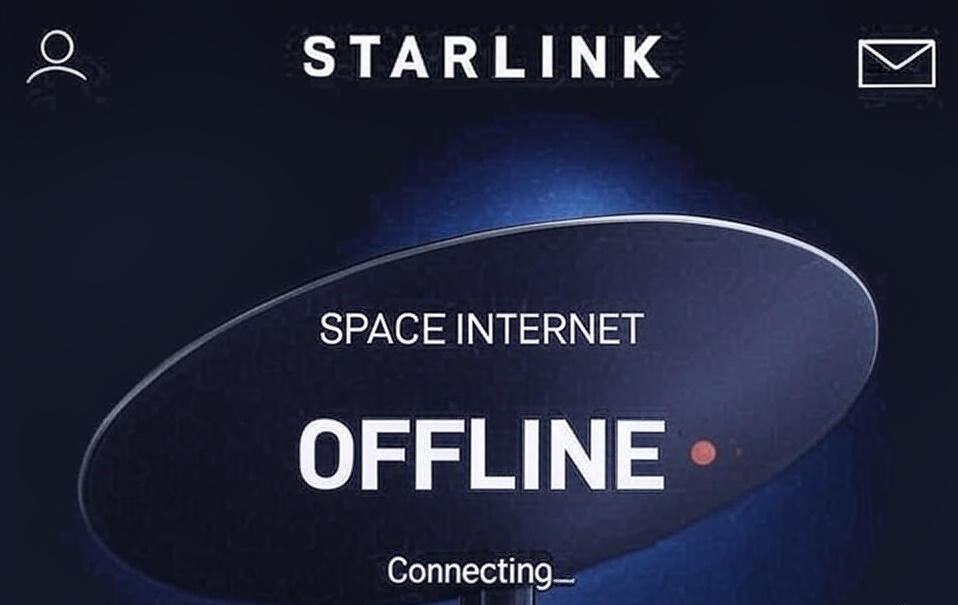
On September 15, 2025, a global Starlink outage disrupted internet services for over 50,000 users, impacting households, businesses, and critical military operations, particularly in Ukraine’s conflict zones. The outage, which began around 7 a.m. ET, triggered widespread concern as connectivity plummeted, with Downdetector reporting a surge in complaints, primarily from the United States. As SpaceX’s satellite internet service plays a pivotal role in providing high-speed connectivity to over six million users across 140 countries, this rare disruption exposed vulnerabilities in the network’s infrastructure. This blog explores the outage’s causes, its far-reaching impacts, and Starlink’s response, shedding light on the challenges of maintaining a global satellite internet system.
Causes of the Starlink Global Outage
The Starlink outage on September 15, 2025, was attributed to a G3 geomagnetic storm, according to reports from Reuters and NOAA, which likely interfered with satellite signals and orbits. Unlike the July 2025 outage caused by a software failure, this event was linked to solar activity, a known risk for satellite-based systems. SpaceX confirmed the disruption, with their team actively investigating the issue, as reported on X. The outage lasted approximately 2-3 hours, affecting users across multiple continents, including North America, Europe, and conflict zones in Ukraine.
Impact of Solar Activity on Satellites
Geomagnetic storms, caused by coronal mass ejections from the sun, can induce currents in satellite electronics, leading to temporary disruptions or system failures. For Starlink, which operates over 7,800 satellites in low-Earth orbit, such events pose a significant challenge. The G3 storm’s high-energy particles likely caused signal interference, resulting in widespread connectivity issues. This event underscores the susceptibility of satellite networks to environmental factors, prompting discussions about enhancing network resilience.
Comparison to Previous Outages
This was not Starlink’s first disruption in 2025. On July 24, a 2.5-hour global outage, caused by a software failure in the network’s control plane, affected millions of users, including Ukrainian military operations. The September outage, while shorter, had a similar global reach, with Downdetector noting over 43,000 reports in the U.S. alone. Unlike the July incident, which stemmed from internal software issues, the September event highlights external environmental risks, emphasizing the need for robust contingency measures.
Impacts on Global Communication

The outage’s effects were felt across diverse sectors, from individual users in rural areas to critical military operations. In the U.S., over 43,000 users reported blackouts, disrupting remote work, education, and online services. In Ukraine, the outage crippled frontline communications, with Robert Brovdi, commander of Ukraine’s Unmanned Systems Forces, reporting a complete halt in connectivity along the front line. This disruption delayed combat operations, highlighting Starlink’s critical role in modern warfare.
Affected Regions and Sectors
- United States: Major cities like San Francisco, New York, and Chicago reported significant connectivity drops, with 68% of users experiencing total blackouts.
- Ukraine: The outage disrupted drone operations and battlefield coordination, raising concerns about over-reliance on Starlink for military communications.
- Other Regions: Users in Europe, Africa, and Asia reported intermittent service, affecting businesses and emergency services in remote areas.
Economic and Operational Consequences
The outage disrupted industries reliant on uninterrupted connectivity, including mining, maritime operations, and emergency response systems. In rural areas, where Starlink is often the sole high-speed internet provider, users faced significant downtime, impacting productivity and access to essential services. The incident also sparked debates about the vulnerabilities of centralized satellite networks, with experts like Gregory Falco from Cornell University comparing it to past software-related disruptions like the CrowdStrike outage.
Starlink’s Response and Future Measures

SpaceX acted swiftly, restoring services within 2-3 hours, as confirmed by Reuters and Downdetector. The company issued a statement on X, acknowledging the outage and assuring users of ongoing investigations. Unlike the July outage, where SpaceX’s VP of Engineering, Michael Nicolls, identified a software failure, this event’s environmental cause may require different mitigation strategies. SpaceX is reportedly enhancing its network with second-generation satellites featuring laser links to reduce reliance on ground stations, a move aimed at improving redundancy.
Steps Toward Greater Resilience
SpaceX’s ongoing efforts to bolster network reliability include:
- Deploying Gen 2 satellites with advanced inter-satellite laser links for faster traffic rerouting.
- Expanding global gateway networks to enhance redundancy in high-demand regions.
- Investing in software upgrades to mitigate risks from environmental disruptions.
User Recommendations During Outages
To mitigate future disruptions, users are advised to:
- Maintain backup internet sources, such as mobile data or alternative Wi-Fi networks.
- Monitor Starlink’s official X account for real-time updates during outages.
- Keep critical files offline to ensure access during connectivity issues.
Implications for Satellite Internet’s Future
The September 2025 outage underscores the challenges of scaling satellite internet to meet global demand. With Starlink serving over six million users and supporting critical infrastructure, its reliability is paramount. The incident has prompted calls for greater redundancy and alternative communication strategies, particularly in conflict zones. Competitors like Amazon’s Project Kuiper and OneWeb are also advancing, potentially offering more resilient alternatives. As Starlink continues to expand, balancing innovation with systemic resilience will be crucial to maintaining its position as a leader in satellite internet.
This outage serves as a reminder that even advanced technologies are not immune to disruptions. By addressing environmental and software vulnerabilities, Starlink can strengthen its network, ensuring reliable connectivity for millions worldwide. For the latest updates, follow SpaceX’s official channels or visit Downdetector for real-time outage tracking.





